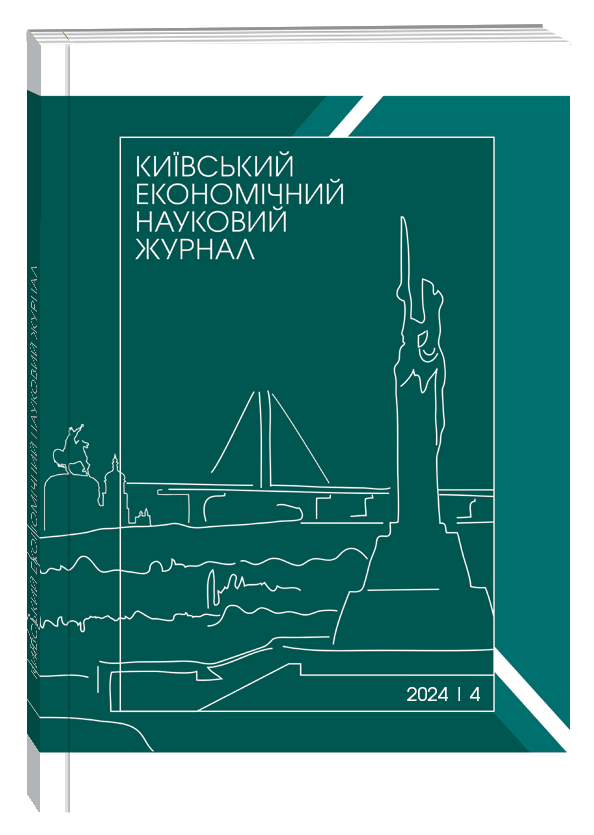THE ROLE OF WASTE-FREE PRODUCTION IN FORMING AN ASSESSMENT OF THE INVESTMENT ATTRACTIVENESS OF AGRICULTURE
Abstract
It was established that the most important role in the implementation of the process of extended reproduction is played by basic means. The level of mechanization of the performed work and, as a result, the increase in gross output, profit and sustainability of the enterprise in general depends on their availability, quality characteristics and intensity of use in the production process. In addition, in agriculture, there is a faster wear and tear of agricultural productive assets due to their operation in unfavorable conditions, including in aggressive environments (working with mineral fertilizers and toxic chemicals). Therefore, it is in fixed assets that the majority of capital investments are made, which should ensure their constant reproduction and qualitative improvement. Also, the assessment of investment attractiveness is influenced by the conditions for the formation of rational land ownership and land use, that is, the possibility of buying, renting, and using land, as well as territorial land management and qualitative characteristics of the land fund. Along with the concept of production resources, economic theory also uses the concept of waste-free production factors. This economic category refers to resources that are actually involved in the production process. Classical economic theory singles out three main factors of production: land, capital, labor, to which modern science adds entrepreneurial abilities, science, ecology, information, and others. The main principles that should be observed when justifying the investment attractiveness assessment methodology are summarized: substantiation of the system of indicators that provide a comparative and objective characteristic of the level of investment attractiveness of the enterprise; organization and provision of a system of permanent collection and processing of information necessary for the construction and analysis of a system of indicators of the investment attractiveness of the enterprise; substantiation of the principles and methods of integral (complex) assessment of the investment attractiveness of the enterprise. It was determined that one of the most important issues that arise when assessing the investment attractiveness of waste-free agricultural production is the selection of indicators. Here it is necessary to take into account the fact that investment goals may differ. Thus, for a financial investor, indicators of the financial stability and solvency of the investment object, characterizing the risk of non-return of funds, are of primary importance, and for the so-called institutional investor, indicators characterizing the efficiency of the investment object and its prospects are of greater importance. Also, when justifying the method of assessing investment attractiveness, the principle of economic feasibility should be followed, which means that the effect of using the results of such an assessment should exceed the costs of its implementation.
References
Гелетуха Г.Г., Желєзна Т.А. Перспективи використання відходів сільського господарства для виробництва енергії в Україні. БАУ. 2014. № 7. С. 33–35.
Колодійчук І.А. Засадничі принципи формування системи поводження з відходами. Регіональна економіка. 2017. № 2 (84). С. 80–88.
Мусіна Л.А., Кваша Т.К. Ресурсоефективна економіка: європейські тенденції та уроки для України. Економічний аналіз: зб. наук. праць. Тернопіль : Видавничо-поліграфічний центр Тернопільського національного економічного університету «Економічна думка», 2014. Т. 18, № 1. С. 55–56.
Гайдуцький А.П. Методологічні аспекти інвестиційної привабливості економіки. Регіональна економіка. 2004. № 4. С. 81–86.
Ситник О.В. Економічна сутність інвестиційної привабливості підприємства та її характеристики. Інвестиції: практика та досвід. 2015. № 23. С. 127–130.
References
Geletuka H.G. and Zelezna T.A. (2014) Prospects for using agricultural waste for energy production in Ukraine. BAU, vol. 7, pp. 33–35.
Kolodiychuk I.A. (2017) Basic principles of forming a waste management system. Rehionalʹna ekonomika. Vol. 2 (84), pp. 80–88.
Musina L.A. and Kvasha T.K. (2014) Resource-efficient economy: European trends and lessons for Ukraine. Ekonomichnyy analiz: zb. nauk. pratsʹ. Ternopilʹ: Vydavnycho-polihrafichnyy tsentr Ternopilʹsʹkoho natsionalʹnoho ekonomichnoho universytetu «Ekonomichna dumka», Т. 18,vol. 1, pp. 55–56.
Hayuduky A.P. (2004) Methodological aspects of the investment attractiveness of the economy. Rehionalʹna ekonomika, vol. 4, pp. 81–86.
Sytnyk O.V. (2015) The economic essence of the enterprise's investment attractiveness and its characteristics. Investytsiyi: praktyka ta dosvid, vol. 23, pp. 127–130.


